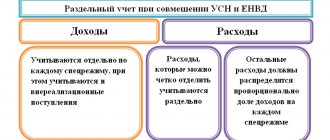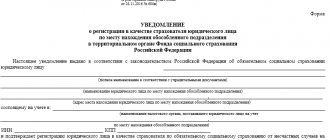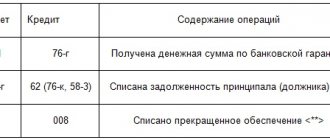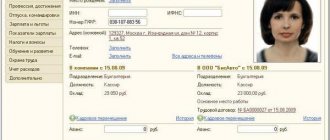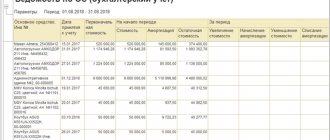The plant growing industry has its own specifics. The costs of obtaining products are incurred over a long period of time, and their reimbursement is associated with the timing of crop ripening. Accounting must reflect expenses for the current year's harvest and the future harvest separately. Accounting for expenses and receipt of crop products helps to solve the following main problems: increasing the gross harvest and increasing plant yields, increasing feed production. In the article we will look at how accounting is kept in crop production, costs are calculated for synthetic and analytical accounting.
Primary accounting in accounting
Accounting for costs, working and fixed assets, and production in the crop production sector is carried out using primary documentation. It is divided into accounting blocks:
- Labor costs and their payment: accounting and waybills by mode of transport, foremen’s books, orders for transactions, time sheets.
- Subjects of labor: acts of write-off of seed material, use of fertilizers, equipment, limit and intake cards. At the end of the month, the data from the listed documents is included in the movement report] form MX-20a[/anchor]. (old form 265-APK)
- Instruments of labor: calculations of depreciation and statements of its distribution.
- Receipt of products: registers for sending goods from the field, accumulative statements of their receipt, acts of sorting, acceptance and transfer, movement, receipt of products and feed.
Registration of the movement of seeds with primary documents serves to correctly record their sowing. Accounting is designed to provide control over sowing rates. Before this, the chief agronomist develops a scheme for obtaining planting material from storage points to structural units.
Information from groups of papers is processed according to certain criteria in accordance with the approved document flow procedure for accounting objects, types of work and agricultural crops. Cumulative registers are used for this.
Calculation of the cost of finished products
The final cost of finished products in modern conditions is determined by market conditions. However, the management of an agricultural enterprise must clearly understand what the actual cost is. After all, the greater the difference between the market price of a product and its cost, the more profit you will make. If the profit is small, or the cost is higher than the market price (that is, the enterprise incurs losses), then it is necessary to urgently look for ways to reduce production costs or switch to more profitable crops.
The cost of crop production is calculated in several stages:
- Calculate the total production costs for a given crop.
- Calculate the quantity of finished products - main and by-products, if any.
- The cost of by-products is subtracted from the total amount of production costs (for example, when growing wheat, the by-product is straw, which can be sold to livestock farms or producers of briquetted fuel);
- The resulting number is divided by the number of main products.
It is important to note that by-products are always recorded at lower prices than the main products. That is, if one crop produces two types of products, then the main one will be considered the one that costs more at market prices. In the case of wheat, the main product is grain (which is quite obvious). The definition of the main product is less obvious, for example, in forestry, where seedlings and industrial wood and firewood are produced simultaneously.
Cost classification
The grouping of production costs is presented in the form of a diagram.
Variable costs are direct costs. They are attributed to the cost of production of the sub-industry in which they arose. They change in proportion to the volume of production, therefore they are called proportional.
Conditional variables are assigned to certain products if it is known that the need for special equipment will be higher than their availability as a result of the expansion of production.
The profitability of an organization is shown by marginal income. It is equal to the amount of revenue minus proportional costs.
Synthetic accounting
For synthetic accounting, journal order No. 10-APK is used. It contains revs. 20.1 and summarizes the cost information. Values are entered into it from personal accounts, and numbers from it are entered into the General Ledger.
The results of analytical accounts for costs and product output for the month should be equal to the account turnover. 20.1 in f. 10-APK and the General Ledger.
In automated accounting, the registers are: account analysis, balance sheet and chess sheet.
Balances in the accounts for the production and sale of crop products at the end of the year are entered from the General Ledger into the accounting reporting forms.
Results
Accounting in agriculture has a large number of nuances.
Despite the fact that it is maintained using general principles and a general chart of accounts, the accounting procedure for individual items may differ significantly from the procedure in other industries. This is primarily due to the specifics of agricultural activities, which depend on natural biological cycles, climatic conditions and the use of land as the main asset. You can find more complete information on the topic in ConsultantPlus. Free trial access to the system for 2 days.
Analytical accounting in crop production
Analytics of crop production costs has a characteristic difference. First, they are reflected by structural units: teams, workshops, departments, and then grouped by farm.
The objects of analytical cost accounting include:
- Types of crops with identical cultivation methods;
- Types of work in progress;
- Distribution costs;
- Others.
The main register of analytics is the production report of the division f. 83-APK. It includes the following sections: on costs (DT 20.1), on receipt of products (Kt 20.1), on turnover on the account loan. 20.1. It is opened for an annual period for each structural unit.
In section 1, each accounting object is entered in a separate column. The nomenclature of costs is indicated line by line. Costs are allocated according to corresponding accounts. Information is reflected in total and quantitative terms. Figures are recorded from work and cost journals, primary records and accumulation sheets.
Distributed costs are shown as negative values in the report because they correspond to a specific culture. These are the costs of soil irrigation, drainage, and unfinished production upon completion of the process.
To avoid accounting for identical costs twice, amounts with a minus sign are subtracted from the totals of the f. 83-APK horizontally and vertically.
Section 2 reflects the quantity and planned cost of products received during the month and since the beginning of the year. Here the costs of crop destruction are written off.
Section 3 contains monthly turnover according to Kt 20.1. They are entered into form 10-APK (→).
Data from f. 83-APK fall into a similar summary document for the enterprise. Each line and column contains an indicator summed up from all personal accounts of structural units.
Analytics of the production process is divided into harvest costs of adjacent years by type of work and crop.
Costs and products received are taken into account in the account. 20 by article:
- Salary and accruals;
- Seeds for planting;
- Fertilizers: organic and mineral;
- Pest control products;
- Maintenance of fixed assets;
- Works, services;
- Production management procedure;
- Loan transfers;
- Other.
According to Dt 20.1, they show the actual costs of receiving crop products and the balance of unfinished work at the beginning of the reporting interval, according to Kt 20.1 - its output at the planned cost, write-off of differences in calculations at the end of the year and damage from natural disasters.
Land as the main means of production in agriculture
Land holds a special place in agriculture. This is the main object of fixed assets and the main subject of labor application. At the same time, land has significant differences from other means of production:
- does not wear out or depreciate;
- when used correctly, it can improve its properties (for example, in terms of increasing fertility);
- is not a human-made object;
- the land plot cannot be manufactured, replaced, or moved.
All this leads to the peculiarities of land accounting:
- Land plots can be used by an enterprise on the right of ownership, use or lease. Accordingly, accounting should be conducted in such a way that analytics on this aspect are provided both on the balance sheet and on off-balance sheet accounts.
- When registering the land, it is valued:
- by purchase costs;
- the value of the property exchanged for the land plot (in case of exchange);
- market value on the date of capitalization (if received free of charge);
- agreement of the parties (with a contribution to the management company).
If none of the above methods are suitable, the land is valued at the standard price.
IMPORTANT! The definition of the standard price of land is given in Art. 25 of the Law of the Russian Federation “On Payment for Land” dated October 11, 1991 No. 1738-I. The standard price is a value that is determined based on the potential income from a specific land plot over the estimated payback period.
- Land analytics is provided in terms of at least:
- existing agricultural land (they, in turn, are divided by use: arable land, perennial crops (orchards, vineyards), pastures, hayfields, etc.);
- fallow lands (resting to restore fertility);
- areas of forests and tree and shrub plantings (protective strips for other land use objects);
- lands under water and at the stage of reclamation;
- lands under roads, runs and clearings;
- lands for public buildings;
- other lands depending on their purpose and use.
In relation to agricultural land plots, the land tax rate is set by municipalities. It cannot exceed 0.3% (clause 1, clause 1, article 394 of the Tax Code of the Russian Federation). The rate is significantly lower than for other categories of land. Is the reduced rate maintained if the land is leased? What if the land is idle? Find out the expert opinion of ConsultantPlus by getting trial access to the system for free.
The formula for calculating land tax can be found here.
- Accounting is carried out using standard accounts and postings for non-current assets. For example, the acquisition of a plot of land into ownership is reflected as follows:
- Dt 08 Kt 60, 76, 75, 98 - ownership of land acquired;
- Dt 01 Kt 08 - the land was accepted for balance according to the act.
NOTE! For operations with land, there are separate forms of primary registration, approved by order of the Ministry of Agriculture of the Russian Federation dated May 16, 2003 No. 750. For example, for the capitalization of agricultural land (land), form 401-APK is used.
Calculation difference
The harvest of crop products is received according to the planned cost of primary production and summary documentation.
Actual costs are calculated at the end of the year. To do this, they close costly accounts for auxiliary industries, general business and general production expenses, calculate expenses for dead plants, and distribute costs for land improvement.
Based on the results of the reporting period, 20.1 is closed by writing off the calculation difference.
The cost is calculated by type of crop per 1 c. main and secondary products.
By-products are not calculated. Its cost is determined by standards calculated based on the costs of cleaning, transportation, stacking and other work.
When determining the cost of output, the costs of minor items are deducted from the total costs of cultivation.
The calculation difference is written off as a reversal entry (the plan is greater than the actual) or an additional posting - in case of overspending (the actual is greater than the plan).
Example #2. Accounting and calculation of calculation differences
The annual costs of growing rye amounted to 2,538,700 rubles. 10,418 quintals were received from the harvest. full grain at a standard cost of 203 rubles per centner, as well as 6,040 centners of waste containing 25% of a full-fledged product at 58 rubles per centner and straw for 230,500 rubles.
Actual costs will be: RUB 2,308,200. (2,538,700 – 230,500);
The waste contains 1,510 centners of complete grain (6,040 * 25%);
Total whole grain: 11,928 c (10,418 + 1,510);
Cost 1 c. grains in fact: 212.84 rub. (2,538,700 / 11,928);
Cost 1 c. grain waste amounted to 66.14 rubles.
The calculation difference is determined:
for grain: 102,513.12 rub. ((212.84 – 203) * 10,418);
for grain waste: 49,165.60 rub. ((66.14 – 58) * 6,040).
The actual cost of both types of products is higher than planned, so the cost difference must be taken into account by additional posting:
Dt 10, 43 Kt 20.1 in the amount of 151,678.72 rubles. (102,513.12 + 49,165.60).
How differences in agricultural industries affect accounting in them
Industry differences lead to the fact that the classification of the same types of activities for accounting purposes in agriculture may differ.
For example, for an enterprise producing compound feed, sowing and harvesting the corresponding crops, hay production will be the main activities. And for an enterprise specializing in fattening cattle, the same production of hay on existing hayfields will become an auxiliary production.
Accordingly, accounting will be provided in different ways:
- the feed manufacturer will take into account its costs for harvesting hay on account 20;
- and the owner of a meat farm - on account 23;
- Accounting for milk in agriculture is carried out on sub-accounts opened to accounts 20 “Milk Processing” and 10 “Milk” as a raw material.


